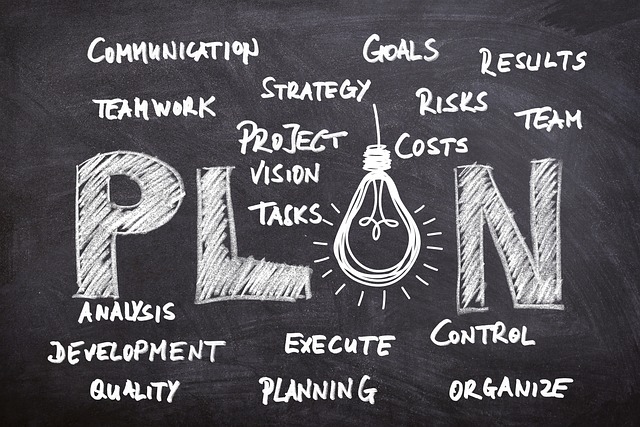Understanding Onboarding in an Agile Environment
Onboarding plays a critical role in integrating new employees into an organization, particularly in an agile setting. The goal of effective onboarding is to help new hires understand the company culture, their role, and how they can contribute to the team’s success. In an agile environment, which often emphasizes flexibility, collaboration, and continuous improvement, onboarding must adapt to fit these principles. Unlike traditional onboarding, which can be lengthy and bureaucratic, agile onboarding is more dynamic, focused on creating engaging experiences that promote quick adaptation and team cohesion.
Managers need to embrace a people-first approach in their onboarding strategies. This approach recognizes that employees are not just cogs in the wheel but individuals with unique skills and backgrounds. By respecting these differences and onboarding new hires in a personalized manner, organizations can lay a solid foundation for employee engagement and retention. Additionally, agile organizations thrive on feedback and iteration, so managers should be responsive and willing to adjust onboarding processes based on new hire feedback. This creates a cycle of continuous improvement that benefits both the employee and the organization.
Crafting a Multi-Channel Onboarding Experience
One of the most effective strategies for onboarding new hires in an agile setting is to create a multi-channel onboarding experience. This means utilizing various tools and methods to engage and inform new team members. For instance, consider combining traditional methods such as orientation sessions with more modern approaches like digital onboarding platforms and social media groups. This blend allows new hires to absorb information in various ways, catering to different learning styles.
Using technology can enhance the onboarding experience significantly. Platforms like Slack, Microsoft Teams, or dedicated onboarding software can facilitate communication and ensure that new hires feel connected to their team from day one. Additionally, you might implement video calls with key team members to foster a sense of relationship-building early on. Organizing virtual coffee chats or informal meet-and-greets can help new hires get to know their coworkers beyond the work context, leading to stronger workplace relationships and a more inclusive environment.
Moreover, don’t forget about the value of hands-on training. Agile environments often rely on rapid iterations and feedback loops, so allowing new hires to participate in real projects right away can make them feel involved and valued. By doing so, you are not only providing immediate opportunities for learning but also enabling new employees to contribute valuable insights based on their previous experiences. This hands-on approach can stimulate a sense of ownership and accountability, essential principles in agile methodologies.
The Role of Mentorship in Onboarding
Mentorship is another essential component of effective onboarding strategies, especially in an agile setting. Pairing new hires with experienced team members fosters a sense of camaraderie and provides them with a trusted resource to turn to during their initial days. This relationship can help demystify the onboarding process, making the transition smoother and less overwhelming. Mentors can offer guidance, share insights about the company culture, and provide support as new hires learn the ropes.
Furthermore, mentorship aligns well with the agile principle of collaboration. By promoting interaction between team members, companies can cultivate a culture where learning is shared and knowledge is passed on fluidly. Managers should encourage regular check-ins between mentors and new hires. This ensures that new employees receive ongoing feedback and encouragement, which are vital for their professional development.
Additionally, consider establishing a buddy system where new hires can connect with a peer at the same level. This approach reduces the pressure of seeking help from superiors and fosters a relaxed atmosphere for asking questions. New hires will often feel more comfortable engaging with a fellow employee who has recently undergone a similar onboarding experience. This system not only enhances the onboarding process but also reinforces a culture of support and teamwork that is fundamental in agile environments.
Implementation of Continuous Feedback Loops
Another vital aspect of effective onboarding in agile settings is implementing continuous feedback loops. An agile approach thrives on adaptability, which means that managers should not view onboarding as a one-time event. Instead, consider it an ongoing process where feedback informs and shapes the experience. New hires should feel empowered to share their thoughts on the onboarding process and suggest ways it can be improved.
Create structured opportunities for feedback during and after onboarding. Managers can schedule check-ins at the end of the first week, the first month, and the first quarter to gather insights on how the new hire feels about their experience and what could be better. This approach not only helps identify areas for improvement but also demonstrates to new employees that their opinions matter, instilling a sense of value and belonging.
Employing tools like anonymous surveys can also play a crucial role. This allows new hires to express themselves more freely and openly, potentially leading to insights that managers might not have noticed otherwise. Managers should take this feedback seriously, and where feasible, implement changes to improve the onboarding process continually. This iterative approach mirrors the principles of agile development and positions onboarding as a living process rather than a fixed, unchangeable sequence.
Incorporating Company Culture into Onboarding
Integrating company culture into the onboarding process is a fundamental strategy that shouldn’t be overlooked. In an agile environment, cultural alignment can enhance collaboration and shared goals among team members. Managers should clearly communicate the organization’s mission, values, and norms from day one. Make sure that new employees understand what the company stands for and how they fit into that picture.
One effective way to communicate culture is through storytelling. Share stories from existing team members about their experiences that embody the company’s values. This practice can be much more impactful than simply reciting a list of values or policies. Moreover, consider organizing workshops or team-building activities that reflect the company culture. Participating in these activities allows new hires to experience the culture firsthand and encourages teamwork.
Another aspect to highlight is the importance of psychological safety in an agile setting. Employees should feel safe to voice their opinions, experiment, and make mistakes without fear of reprisal. Managers can create this environment by demonstrating vulnerability and encouraging open discussions. By emphasizing that it’s okay to learn and grow, new hires will become more comfortable contributing ideas and insights, thus enhancing their engagement.
Utilizing Technology for Streamlined Communication
In today’s digital age, leveraging technology for onboarding has become paramount. With the rapid evolution of tech tools, managers can utilize various platforms that facilitate communication, training, and resource sharing. Online onboarding systems, learning management systems, and collaborative platforms can seamlessly integrate new hires into the company fabric. For instance, providing resources that allow employees to access training modules at their convenience will make them feel more empowered in their learning journey.
Moreover, managers can employ project management tools like Trello or Asana to keep track of new hire progress and tasks. This not only streamlines the onboarding but also aligns with agile principles, allowing for adaptability and focused collaboration. New hires can see their objectives and milestones clearly, making the onboarding process transparent and structured. This helps in minimizing confusion and miscommunication, which are often pitfalls in any onboarding experience.
Additionally, consider employing tools like interactive quizzes or gamified learning experiences to make onboarding engaging. By making learning fun, you encourage new hires to participate actively rather than passively consuming information. This approach resonates well with the agile philosophy of continuous learning and improvement. The more engaged your new hires are, the quicker they will adapt and contribute effectively to the team.
Creating an Inclusive Onboarding Experience
In today’s diverse workforce, creating an inclusive onboarding experience is more important than ever. It is essential for organizations to recognize and embrace the diversity of their employees’ backgrounds, cultures, and experiences. Managers need to ensure that the onboarding process reflects this commitment to inclusivity. Begin by providing materials and resources that consider various cultural perspectives. This means ensuring that all training content is accessible and inclusive for everyone, regardless of their background.
Moreover, fostering connections between new hires and existing team members of various backgrounds creates a sense of community. Managers should intentionally create diverse teams and pair new hires with mentors who can offer different perspectives. This not only enhances learning but also enriches the overall team dynamic. Invest time in understanding the unique challenges that diverse employees might face, and adapt the onboarding approach accordingly to mitigate those challenges.
Additionally, promote discussion around diversity and inclusion throughout the onboarding process. Allow new hires to share their experiences and perspectives, creating a safe space for dialogue. This encourages a culture of openness and respect, reinforcing the importance of diversity within the organization. Ultimately, an inclusive onboarding experience contributes to a positive employee experience, ensuring that all team members feel valued and engaged.
Expectations and Goal Setting for New Hires
Setting clear expectations and goals for new hires is another crucial component of effective onboarding in agile environments. From the outset, managers should outline what is expected in terms of performance, collaboration, and contributions to team objectives. Establishing these parameters not only guides new employees but also provides a structured framework that allows them to measure their progress and success.
Furthermore, managers need to balance expectations with achievable goals. Rather than overwhelming new hires with a laundry list of tasks, focus on immediate, short-term objectives that can lead to bigger goals over time. This aligns with the agile principle of iterating and evolving based on feedback and results. By celebrating small wins and milestones, you can build confidence and motivation among new aides, enabling them to feel more empowered in their new role.
Incorporate regular check-ins to review progress and adjust goals as necessary. This keeps the dialogue open and ensures that any roadblocks are addressed promptly. Having these touchpoints reinforces the idea that onboarding is not a one-time event but a continual process of learning and development. Establish a two-way street in these discussions, allowing new hires to express their feelings about the expectations set for them. This reinforcement of open communication not only serves their development but also strengthens their relationship with management.
Encouraging Collaboration and Team Bonding Activities
Fostering collaboration and team bonding activities is vital for an effective onboarding experience, especially within an agile framework. Incorporating team-building exercises helps to establish rapport among team members and builds a cohesive working environment. This approach aligns well with agile principles, which emphasize collaboration as a key driver of success. Managers should prioritize activities that encourage teamwork, problem-solving, and open communication.
Consider organizing icebreaker sessions or collaborative workshops where new hires can work with their colleagues on a specific challenge or project. These activities instill a sense of belonging and contribution from the outset. Encouraging teamwork in a supportive environment opens the doors for creative solutions and strong relationships among team members.
Additionally, virtual team-building activities can be just as effective for remote teams. Utilizing platforms that facilitate engaging games or problem-solving challenges can keep the spirit of collaboration alive, even when team members are spread across different locations. This not only aids in bonding but also reinforces the agile practice of working collectively towards common goals.
Continuous Learning and Professional Development
The final piece of the effective onboarding puzzle is the emphasis on continuous learning and professional development. In an agile organization, employees should embrace a mindset of lifelong learning. Managers can demonstrate this commitment by providing resources and opportunities for growth throughout the onboarding process. This might include access to training programs, workshops, or seminars that align with both personal and organizational goals.
Encouraging new hires to set personal development goals showcases the firm’s investment in their long-term success. Create an environment where asking for help and seeking knowledge is normalized. Holding monthly knowledge-sharing sessions or lunch-and-learn workshops can foster a culture of continuous improvement. Employees should feel empowered to take the initiative in their development, leading to a more motivated and skilled workforce overall.
Additionally, managers should recognize the importance of providing feedback on professional growth. Regular performance assessments offer a chance for employees to reflect on their progress, acknowledge areas for improvement, and set new targets. This aligns seamlessly with the agile principles of iteration and evolution, allowing new hires to adapt and grow within the organization continuously.
Frequently Asked Questions
What is the purpose of effective onboarding in an agile environment?
The purpose of effective onboarding in an agile environment is to help new hires quickly adapt, understand the company culture, and feel integrated into their teams. It involves a dynamic process that encourages collaboration, provides immediate value, and fosters an inclusive atmosphere.
How can technology enhance the onboarding process?
Technology can streamline communication, facilitate training, and provide resources in an accessible manner. Utilizing platforms for collaboration, online training tools, and project management systems can make onboarding more engaging and efficient for new hires.
What role does mentorship play in onboarding?
Mentorship helps new hires navigate their roles and integrates them into the team culture. An experienced mentor can offer guidance, share insights, and provide support, making the adaptation process smoother and less daunting.
Why is feedback important during the onboarding process?
Feedback informs enhancements to the onboarding experience, ensuring it meets the needs of new hires. Regular check-ins and surveys allow managers to adapt the onboarding process, fostering continuous improvement and engagement.
How can organizations promote an inclusive onboarding experience?
Organizations can promote inclusivity by recognizing diverse backgrounds, providing inclusive resources, and encouraging open dialogues about diversity. Engaging all employees in activities that foster mutual respect and understanding enhances the onboarding experience for everyone.



